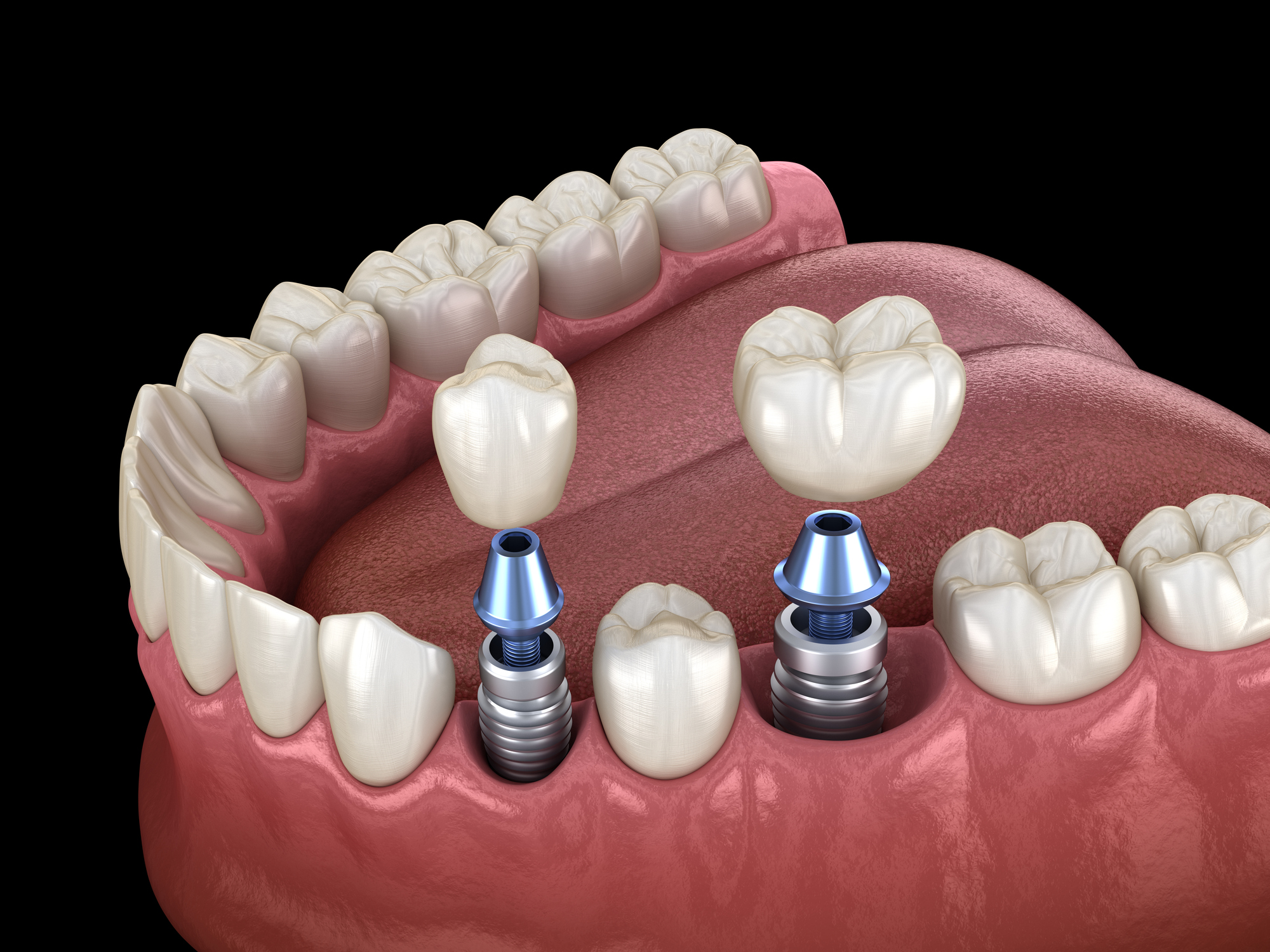The Definitive Guide to Dental Sense
The Definitive Guide to Dental Sense
Blog Article
The Definitive Guide for Dental Sense
Table of Contents3 Simple Techniques For Dental SenseThe smart Trick of Dental Sense That Nobody is Talking AboutExamine This Report on Dental SenseAbout Dental Sense
are clinical tools surgically implanted right into the jaw to recover an individual's capability to eat or their appearance. They provide support for artificial (fake) teeth, such as crowns, bridges, or dentures. When a tooth is lost due to injury or condition, a person can experience complications such as quick bone loss, malfunctioning speech, or modifications to eating patterns that result in discomfort.Dental dental implant systems contain an oral implant body and oral implant joint and might also include an abutment fixation screw. Front tooth filling. The oral implant body is surgically put in the jawbone instead of the tooth's root. The oral implant joint is normally connected to the implant body by the joint fixation screw and expands through gum tissues right into the mouth to sustain the attached artificial teeth
(https://dentalsense1.start.page)Structure of The Oral Implant System choosing oral implants, talk to your dental supplier regarding the prospective advantages and risks, and whether you are a prospect for the treatment. Things to take into consideration: Your total wellness is an essential aspect in determining whether you are an excellent candidate for dental implants, just how long it will take to heal, and the length of time the implant may remain in place.
Smoking might affect the healing procedure and reduce the long-term success of the dental implant. The recovery procedure for the dental implant body might take several months or longer, during which time you commonly have a momentary abutment in location of the tooth. the oral implant procedure: Carefully follow the dental health directions provided to you by your oral provider.
Dental Sense Things To Know Before You Get This
Implant failing can result in the need for an additional surgery to deal with or replace the dental implant system. Restores the capacity to chew Brings back cosmetic look Aids keep the jawbone from diminishing because of bone loss Maintains the health of the surrounding bone and periodontals Helps maintain adjacent (neighboring) teeth stable Improves top quality of life Damages to surrounding all-natural teeth during implant placement Injury to the surrounding tissues throughout surgical procedure, such as sinus perforation Injury during surgical treatment (for example, crack of surrounding jawbone) Inadequate function, such as really feeling like the teeth do not attack together usually A feeling that the tooth is loosened or twisting in location arising from an abutment screw loosening up Implant body failure (looseness of the implant body) as a result of systemic infection, which may be most likely in patients with unrestrained diabetes mellitus due to local infection in bone and gums sustaining the dental implant body as a result of delayed recovery, which might be most likely in clients that smoke Trouble cleaning the gums around the implant, leading to inadequate dental hygiene Untreated gum illness Post-surgical feeling numb as a result of nerve impingement or damages Constantly notify healthcare suppliers and imaging specialists that you have dental implants before any type of magnetic resonance imaging (MRI) or x-ray treatments.
FDA is not familiar with any unfavorable events reported for MRI or x-ray procedures with dental implants. Dental implants systems are usually constructed from products that adhere to international consensus standards of the International Organization for Standardization (ISO) or ASTM International. These requirements have information of what makes a safe material.

An oral implant is a framework that replaces a missing out on tooth. With screw-like tools, the specialist inserts an implant right into the jawbone, and it acts as a support for a fabricated tooth, called a crown. A device called an abutment connects the synthetic tooth to the oral implant. The crown is custom-made to fit the individual's mouth and match the color of their teeth.
The Facts About Dental Sense Uncovered
Some individuals are not eligible for oral implant surgical procedure. It is for oral surgeons to operate on people with: intense illnessuncontrollable metabolic diseasebone or soft cells illness or infectionIf these issues are resolved, go to my site an individual can have the surgical procedure. In, dental specialists avoid from running on individuals with: If individuals with any one of the above go through oral implant surgical treatment, there is a greater danger of the dental implant failing.

Dental implant surgical procedure is a customized procedure. Offer you time to recover. Affix the message and last crown, bridge or denture.
Next off, your surgeon will meticulously place the dental implant right into your jaw. Ultimately, your surgeon will reposition your periodontals and shut the incision with stitches. If your implant is near the front of your mouth, your dental practitioner will make a momentary tooth for you to use till you recover. In this way, you will not have a gap in your smile while you recoup.
The Basic Principles Of Dental Sense
Your copyright can inform you what to anticipate in your scenario. Throughout the healing phase, your jawbone must fuse to the oral implant. This process, called osseointegration, is vital for stability and long-term success. This process can take anywhere from three to 9 months. In many cases, it may take longer.
When your dental implant heals, your dental expert can connect the abutment (little port message) and your last restoration (crown, bridge or denture). This usually takes about one hour to finish and might require a 2nd minor surgical procedure. You shouldn't feel any pain during your dental implant treatment since your copyright will certainly utilize medication to numb your periodontals.
Report this page